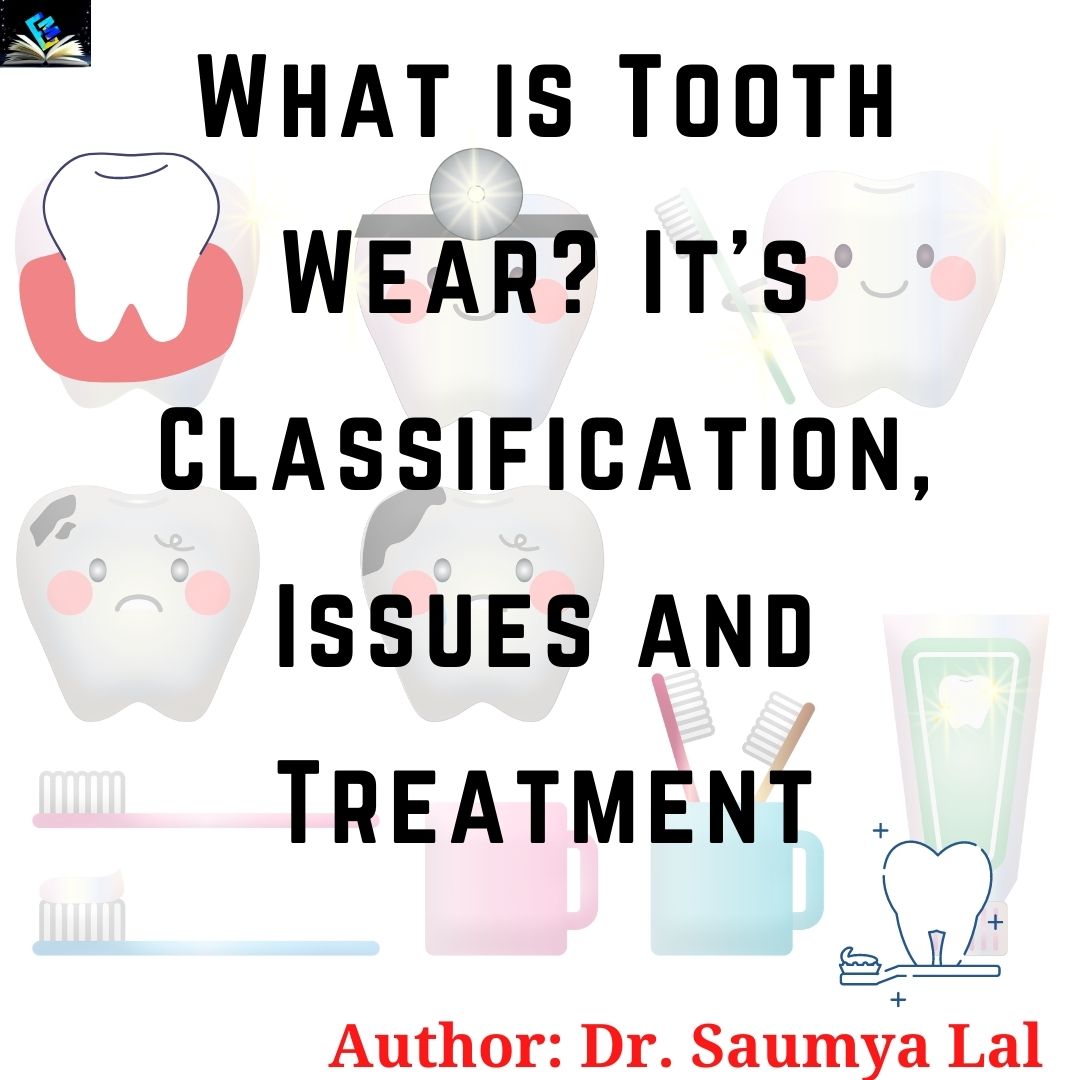
What is Tooth Wear? It’s Classification, Issues and Treatment
Keywords: Tooth Wear, Dental Caries, Treatment
Author: Dr. Saumya Lal
Introduction
Tooth decay or dental caries is a mechanism other than dental caries for the loss of tooth material. Tooth wear in around 97% of the population is a relatively prevalent problem. It is a natural physiological process that occurs over a lifetime. But the frequency of non-carious tooth surface losses has also increased with the increase in personal life and increased retention of teeth. Denture wear varies considerably between persons and societies and is becoming increasingly prevalent in archaeological materials with severe attrition and enamel fractures or erosion.
The typical physiological wear of the tooth after 10 years of human life is around 20-30 micrometers a year or 1 millimeter; especially when a person is older than 30 years. Tooth wear shall be closely managed and monitored if it crosses a particular limit.
Teeth Classification
Attrition is caused by physiological contact between teeth and most frequently occurs on the chewing surfaces and edges of the front teeth. The crushing and grinding of teeth causes stress and anxiety and speeds up tooth deterioration. Teeth and biting surfaces diminish and flatten.
Erosion is another important source of chemical dental deterioration. Intakes of excessive acid food, such as cola drinks, fizzy drinks, and meals, lead to chemical wear of teeth. However, digestive system disorders, such as GERD, allowing acids to flow in from the stomach to the mouth may lead to erosive wear. Erosion causes cupping of the chewing surfaces.
Abrasion occurs when a foreign item regularly comes into contact with tooth surfaces. The item offensive might be brushed with hard teeth that rub strongly the teeth. Not only does overzealous tooth cleaning remove the dirt, but it also destroys the tooth enamel that causes teeth to wear. Biting of the nail, pin, and pencil may also produce abrasive wear of the tooth.
Abfraction or stress corrosion is a particular kind of tooth deterioration involving unfair or eccentric occlusion or biting force on teeth. Teeth areas along the gum line in these situations become weak and fade out.
Tooth Wear Issues
Natural human teeth must be checked and frequent dental consultation should be carried out to overcome the harmful impact of this natural and gradual wear. Worn teeth are viewed as short or decreased in length when the enamel becomes thin or entirely removed with the yellowing of surfaces.
Various issues with tooth surface loss or tooth wear may be categorized as,
- Aesthetic impairment,
- Compromised smile and appearance,
- Short teeth,
- Loss of fullness of mouth,
- Fractured and unattractive teeth,
- Chipping of teeth,
- Discoloured teeth,
- Multiple restorations,
- Fractured restorations,
- Inability to chew and bite properly,
- Difficulty in proper mouth functioning,
- Mastication problems,
- Lip and cheek biting,
- Tongue biting,
- Stress and anxiety,
- Bruxism due to grinding and clenching of teeth,
- Pain and discomfort,
- Hypersensitive teeth,
- Failure of bonded restorations,
- TMJ pain disorder,
- Small mouth opening causes breathing difficulties.
Managing worn-down teeth owing to tooth surface loss only rely on the precise as well as prompt detection of the particular reason. Teeth that are worn down by erosion cannot be controlled by the treatment plan for abrasive tooth wear prevention.
Steps to Diagnose
Different steps to diagnose accurately include,
- Complete clinical history,
- Comprehensive examination,
- Intra-oral radiographs,
- Diagnostic mockups,
- Sensibility tests,
- Salivary analysis,
- Well-articulated study models and casts,
- Computer imaging
Tooth Wear Treatment
- DNA appliance therapy can correct the underlying cause of tooth clenching
- Zirconia crowns and metal-free implants
- Porcelain Veneers
- Occlusal Splint Therapy
- Night Guard
- holistic removal of root canals teeth if necessary.
To prevent tooth wear, the exact cause of tooth loss is a function. Various actions can be done in this connection, as, Dental density therapy is very beneficial. Not only to lower sensitive and uncomfortable teeth by erosive wear but also to decrease the potentials of low PH cola beverages and erosive juice; in the dissolution of dental enamel that leads to severe tooth surface loss. Therapies like MI paste will harden the face of teeth and reduce the deterioration of the tooth.
It is strongly recommended that teeth brushing should be avoided immediately after acidic challenges such as ingesting cola beverages or after vomiting. Remineralization of toothpastes and gels that can harden acid-exposed areas of the tooth is useful in those with hypersensitive teeth because of worn teeth. The use of a 0.7% fluoride solution in the dental chirurgic, followed by 0.4% stannous fluoride treatment at home, was successful. Not everyone agrees that fluoride use is safe and there are numerous alternatives.
Tooth Mousse ACP (GC) includes an active component of the case that has been demonstrated with characteristics that can stimulate the re-mineralization of used tooth surfaces. Casein (part of a protein found in cow milk)
Prevention
The prevention of wear is useful in dietary advice and modified intake of beverages. Calcium added to some beverages can reduce the erosive impact of drinks. Reduce acidic fruits, fruit juices, carbonated drinks as well as cola beverages in quantities and frequency is good. Cheese containing meals or milk products will also assist to reduce the harmful effects of erosive foods, after acidic beverages.
Tooth wear is greater when the production of saliva in a person is less important. In such individuals measures for the prevention of tooth surface loss to increase the saliva have to be taken. It is important to suggest gums and lozenges that promote saliva production. Habitual modifications like the consumption of acidic drinks through broad bore straw and prevention of swinging drinks in the mouth will certainly assist to reduce the tooth wear rate. It is highly useful to prevent excessively tight teeth brushing, the use of less abrasive toothpaste, and avoid using tooth powders and behaviours like pencil biting;
Hard acrylic spline must be given to avoid attrition of the teeth in nocturnal patients who suffer from night-tooth grinding. Splint therapy is the treatment of these individuals’ choices. Dentine bonding agents and dentine restorations must be provided in eroded chewing surfaces to prevent tooth surface loss. In these fields when patients are suspected of certain systemic conditions like GERD erosive wear or depression as well as anxiety, reference is made to a medical specialist for musculoskeletal treatments.
Contact at edumoundofficial@gmail.com






